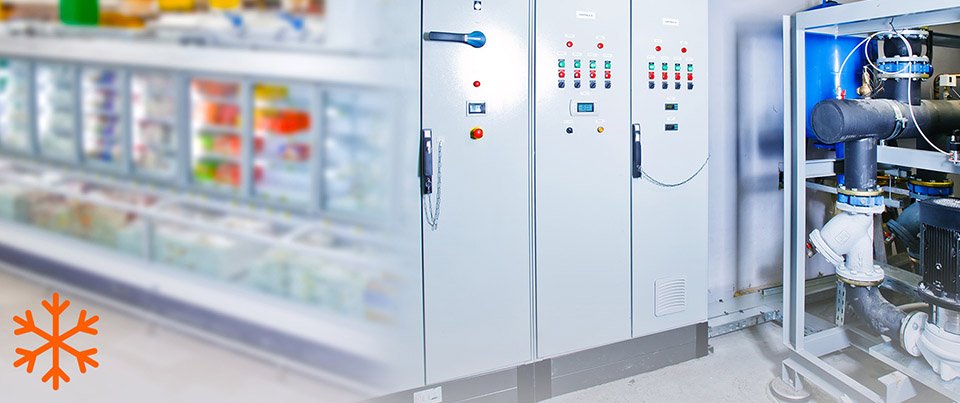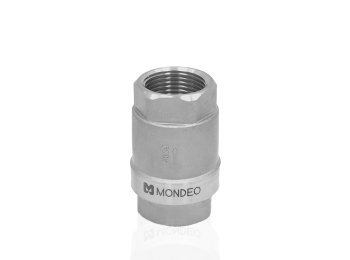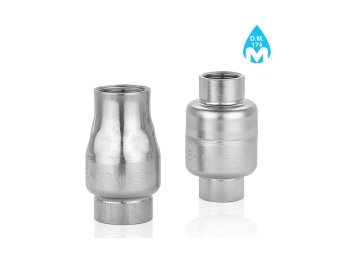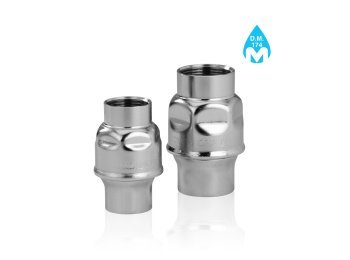Check and Shut-off Valves for industrial refrigeration systems.
In the hydraulic circuits that make up industrial refrigeration systems, check and shut-off valves play a crucial role.
- The industrial refrigeration sector faces complex challenges that require the support of reliable technology, including individual components of the system.
- Hydraulic valves, including shut-off valves and check or non return valves, are essential in these systems for fluid movement and flow regulation.
- Choosing automated or actuated valves and valves made from durable materials such as stainless steel represents a significant added value.
Before delving into the world of valves for industrial refrigeration, let’s start with an interesting fact. Perhaps not many people know that June 26 has been celebrated as World Refrigeration Day for some years now. Why this date? Because it marks the birthday of the British physicist, engineer, and nobleman William Thomson, 1st Baron Kelvin, the inventor of the thermodynamic temperature scale.

As with all World Days, the goal is twofold: celebratory, to highlight the importance of this technology and its central role in our lives, and at the same time to raise awareness, encouraging the sector to adopt increasingly virtuous practices from an environmental perspective and in the fight against climate change.
Refrigeration requires the development, construction, and maintenance of complex systems in which fluid control plays a crucial role. The operating mechanism of the refrigeration circuit, composed of a compressor, evaporator, condenser, and expansion device, relies on cooling a fluid, usually water or air, through the evaporation of another fluid called refrigerant. More specifically, the CHILLER, also known as the refrigeration unit, is a thermal machine that utilizes the compression and expansion of a refrigerant to extract heat from the heat transfer fluid, water, or air. These systems are used in the temporary preservation of perishable goods, even at temperatures down to -60°C. In general, refrigeration systems play a crucial role in various industrial sectors, from food production to the chemical and pharmaceutical fields, where products are at high risk of spoilage. Cold storage rooms, refrigerated counters, blast chillers, and rapid cooling tunnels ensure the preservation of food in supermarkets and throughout the logistics chain, as well as maintaining temperatures for the safety of medicines.
Regarding the type of refrigerant used, ammonia represents a particularly economical and sustainable choice, especially in light of the European F-Gas Regulation (EU) No 573/2024. This regulation aims to reduce the amount of high global warming potential (GWP) fluorinated gases by 80% across the European Union by 2030, as these gases have a significant impact on the greenhouse effect.
The Use of Hydraulic Valves in Industrial Refrigeration.
Let’s now consider some types of hydraulic valves found within refrigeration systems, particularly those related to the movement of the heat transfer fluid. CHECK OR NON RETURN VALVES should be installed in the system branches to prevent flow reversal, increasing efficiency and safety. Check valves are unidirectional valves that block fluid passage through a straightforward mechanism: when downstream pressure exceeds upstream pressure, the shutter closes the valve, preventing backflow. Check valves also prevent the system from emptying in case the electric pump for fluid movement stops.Then there are SHUT OFF VALVES, which intercept the fluid and regulate its passage. Shut-off valves come in various types, with ball valves being the most common. These intercept the fluid by rotating a spherical shutter and are suitable for high-frequency operation. Ball valves are available in full bore, reduced bore, and 2- or 3-way types. The latter allows for fluid diversion and redirection according to the system's needs. Shut-off valves play a crucial role in isolating areas of the system, essential during maintenance work without needing to empty the entire system.
In industrial technology systems, an added value is the possibility of automatic operation. SHUT OFF ACTUATED OR MOTORIZED VALVES are available with both manual lever and actuator. The automatic solution is ideal when significant force is required to open and close the valve, or when it is located in hard-to-reach places. Finally, in industrial systems, it is crucial to meet high-quality standards and minimize component failures and wear. Therefore, using stainless steel hydraulic valves is always a winning choice in terms of system safety and reliability.

























